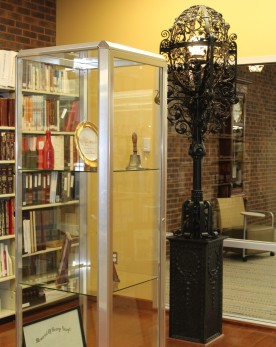By Jared L. Olar
Local History Program Coordinator
Long a pillar of Pekin’s community life, the Pekin YWCA at 315 Buena Vista Ave. was established about a century ago, starting out in 1927 as an affiliate of the Peoria Young Women’s Christian Association. The Pekin YWCA obtained its own articles of incorporation from the State of Illinois on 29 Oct. 1928 — the date that the Pekin Y regards as its “birthday.” The following year, on 29 April 1929 the Pekin YWCA obtained its own charter as an independent member of the national Young Women’s Christian Association, and it has operated under that charter ever since. Manda Brown, executive director of the YWCA of Pekin, says the association is already looking ahead to its 100th birthday which it will celebrate on 29 Oct. 2028.
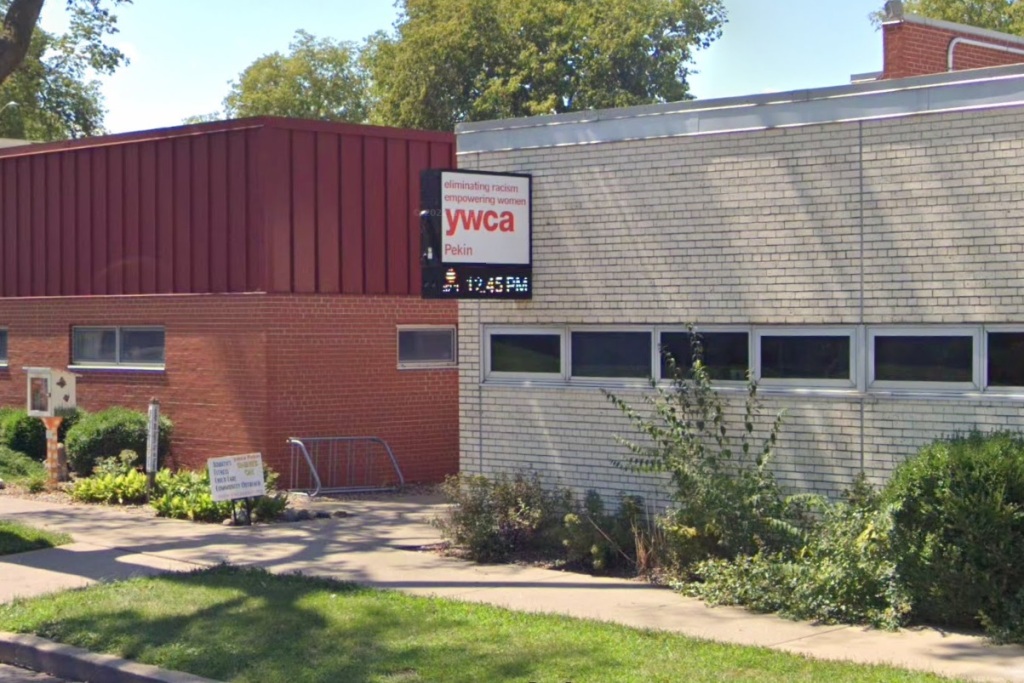

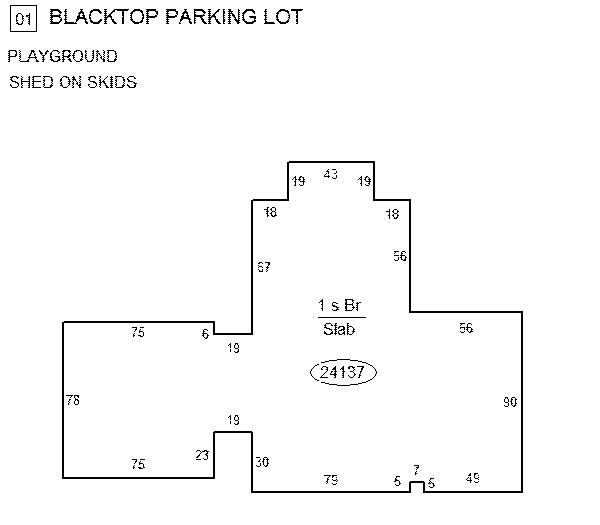
Describing the Pekin YWCA’s mission and community role, a Pekin Daily Times article dated 24 Feb. 1929 says, “The Y. W. occupies a unique position as a community meeting place for hundreds of women and girls, and no less than ten organizations who are in no way connected to them hold their regular meetings there. It is a community organization endeavoring in every way possible to co-operate with other organizations.”
The history of the YWCA on a national level began in 1873, when a student association was established on the campus of Illinois State University in Normal, Illinois. Since then, the Young Women’s Christian Association has grown to 194 local associations. Though the YWCA started out as a Christian mission and included chapel services, it is no longer officially or strictly a religious organization. “It’s an organization with Christian roots, but we no longer teach any particular religion or have any religious offerings,” explained Melinda Figge, past executive director of the Pekin YWCA on the occasion of the Pekin Y’s 75th anniversary in 2004. “But I think that our willingness and desire to help people, to empower people, comes out of our Christian beliefs that all people are created equal.”
The YWCA of Pekin’s community programs include an early learning center, physical fitness, swimming lessons, and adult literacy and learning. The association has also long been active in promoting social justice and working against racism, with its Coalition for Equality as one of its prominent committees. In their mission statement adopted in 2009, the Pekin YWCA says it is “dedicated to eliminating racism, empowering women and promoting peace, justice, freedom and dignity for all.” The association has a 14-woman board of directors under the presidency of Hope McAllister, and, as mentioned above, is headed by Manda Brown, executive director, Meredith Kerley, Early Learning Center director, Anna Green, Adult Literacy director, and Maureen Naughtin, Community Outreach director.
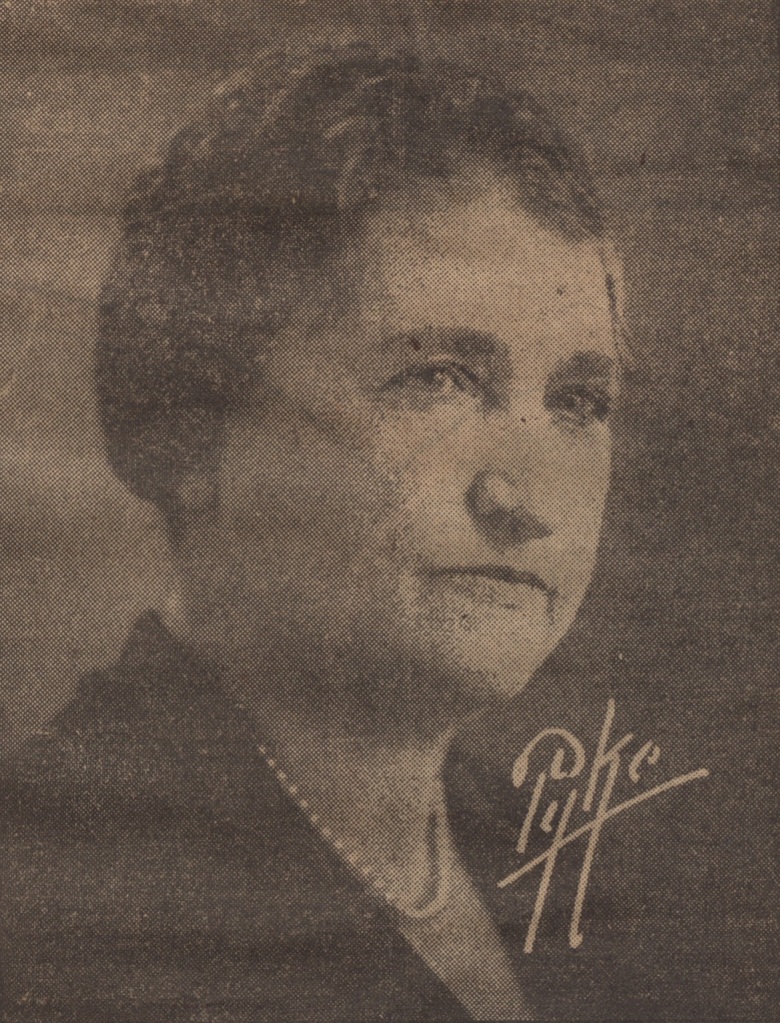
From its small start in 1927, it did not take long until, by early 1929, Pekin YWCA membership has grown to include 600 adults and 300 members of the YWCA Girl Reserves, with a 70-member Business Girls Fellowship Club and a Blue Tri Club of 30 members. The Pekin YWCA’s founding president was Martha (Herget) Steinmetz (1868-1947), daughter of John Herget (1830-1899) and widow of George A. Steinmetz (1864-1915). The Pekin YWCA in 1929 also hired Mrs. Mary Watt as its first full-time secretary.
Though the Pekin YWCA has been based on Buena Vista Ave. for more than six decades, their first building was the former Stoltz House that used to be located at 612 Broadway. In more recent newspaper reports on the YWCA’s history, however, the address of their first building is sometimes given as 616 or 610 Broadway. Nevertheless, old city directories and Sanborn Fire Insurance Maps make clear that the Stoltz House was at 612 Broadway. Demolished decades ago during the construction of St. Joseph Catholic School (the site is now part of the school’s playground/parking lot), for many years it was the home of John W. Stoltz (1825-1899), a prominent Pekin businessman who served a Pekin mayor in 1872. After his death, his widow Emma Stoltz (1845-1923) continued to live there until her death, after which Frank Brown lived there for a few years.
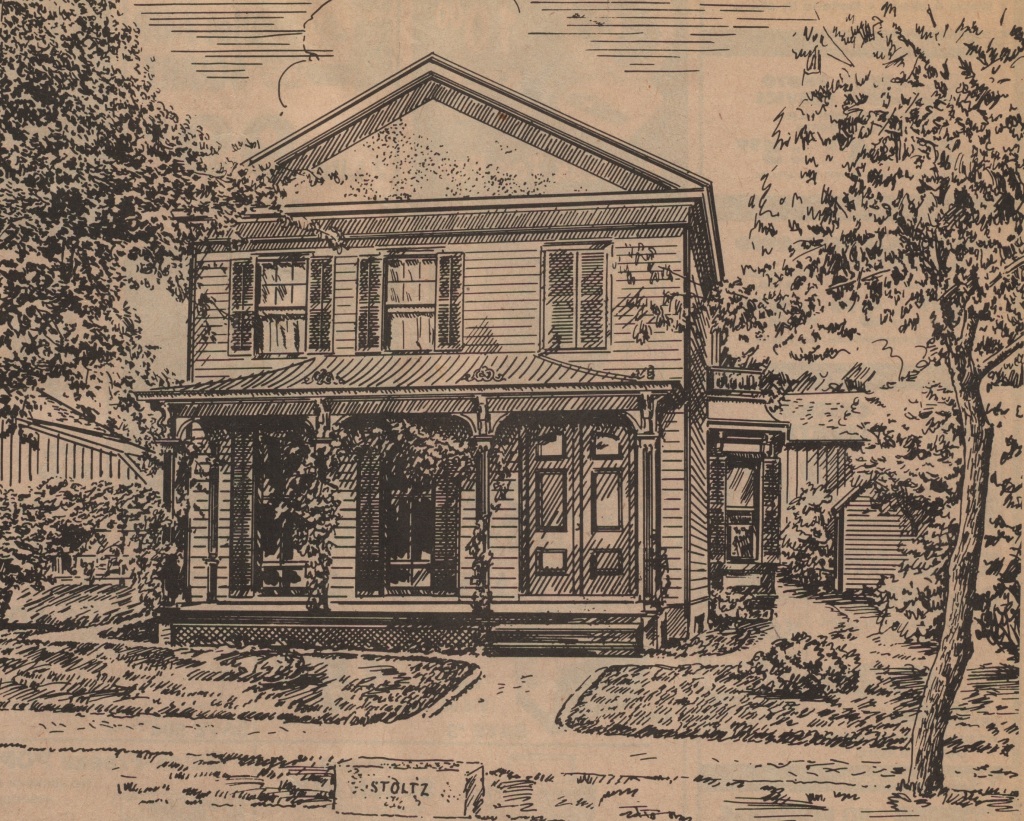
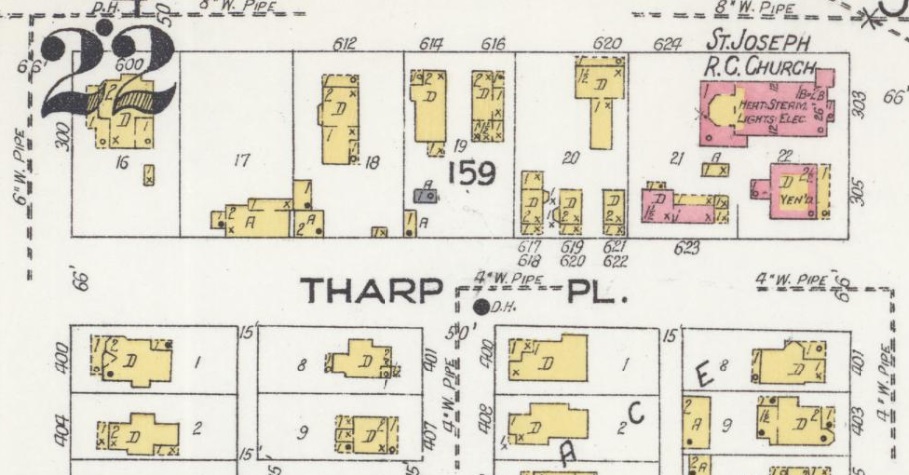

The above-quoted 24 Feb. 1929 Pekin Daily Times article says that when the Pekin YWCA sought a building to serve their needs, “The Stoltz homestead was purchased and remodeled. It is situated on Broadway, convenient to the business section of the town.” One of the original services provided by the Pekin YWCA at 612 Broadway was a tea room that provided lunch to guests for a modest fee. Of the tea room, the article says:
“The tea room with its checked gingham curtains and its ever present orange candles attract many who are living temporarily in the city and those who are looking for wholesome food under pleasant surroundings. While it has always paid its own way, yet it is not a money-making proposition. It is there to give service and invites its patrons to ‘bide a wee’ if they so desire.”
Pekin’s YWCA only occupied the old Stoltz Home for four years. Seeking a more spacious building, in 1931 the YWCA purchased of the Otto Koch Home at 310 S. Fourth St., former home of Otto Koch (1849-1920), who was co-founder and later president of the W. A. Boley Ice Company. After Otto’s death, his widow Ida Koch (1850-1929) remained at the home until her death. The YWCA of Pekin was the next owner and occupant of the Otto Koch Home, where the YWCA remained from 1931 to 1959.
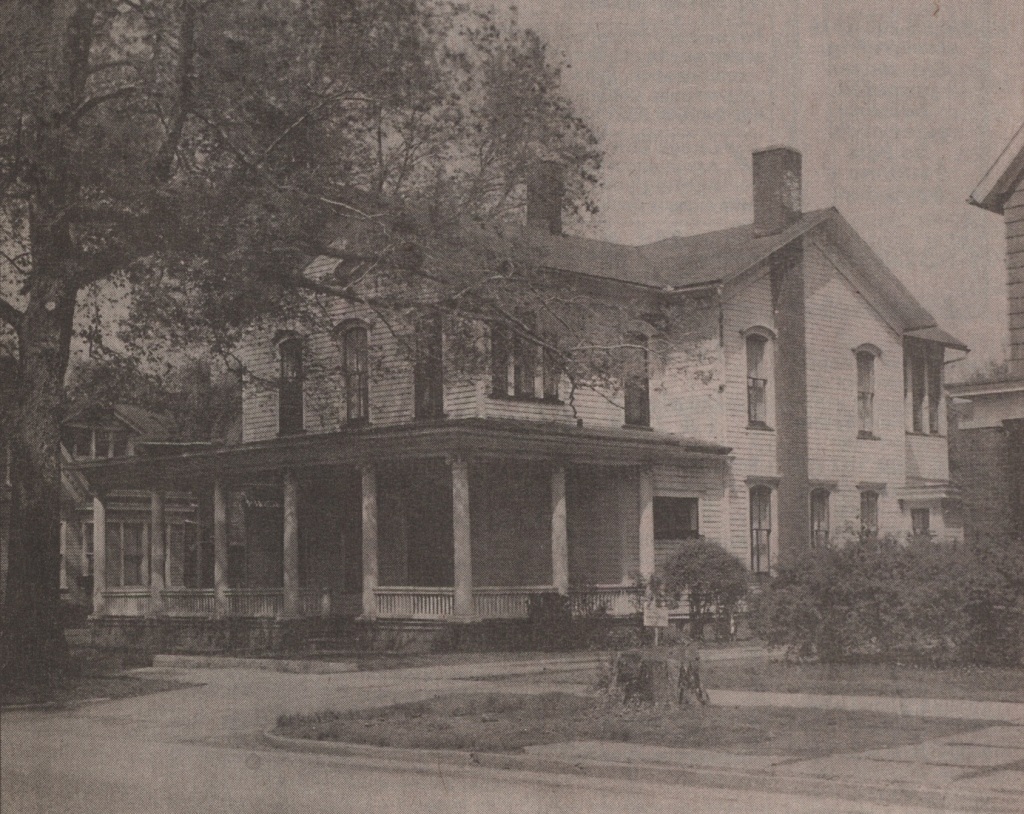
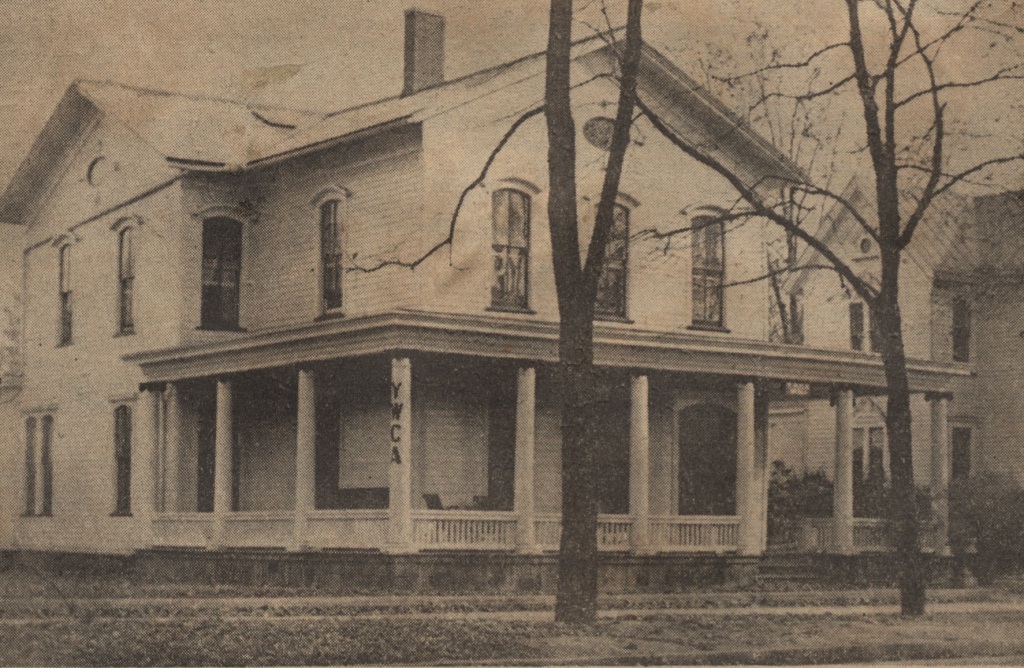
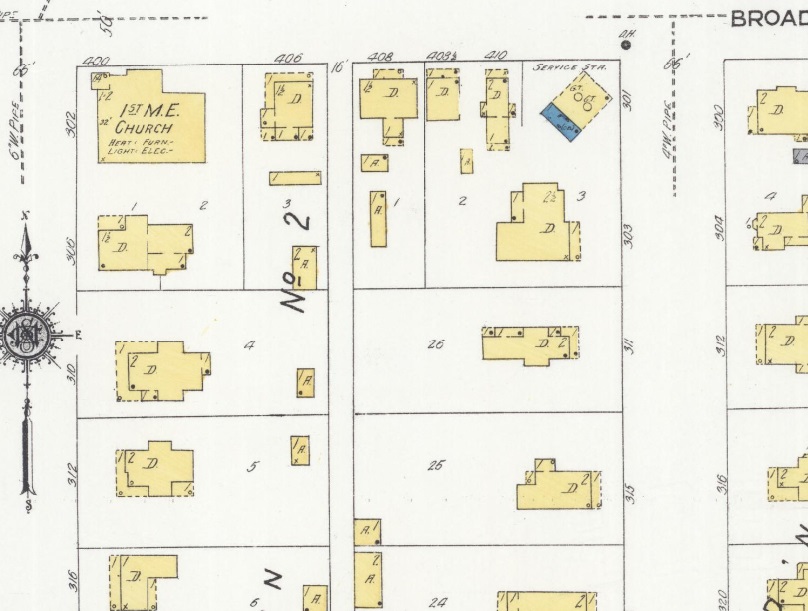

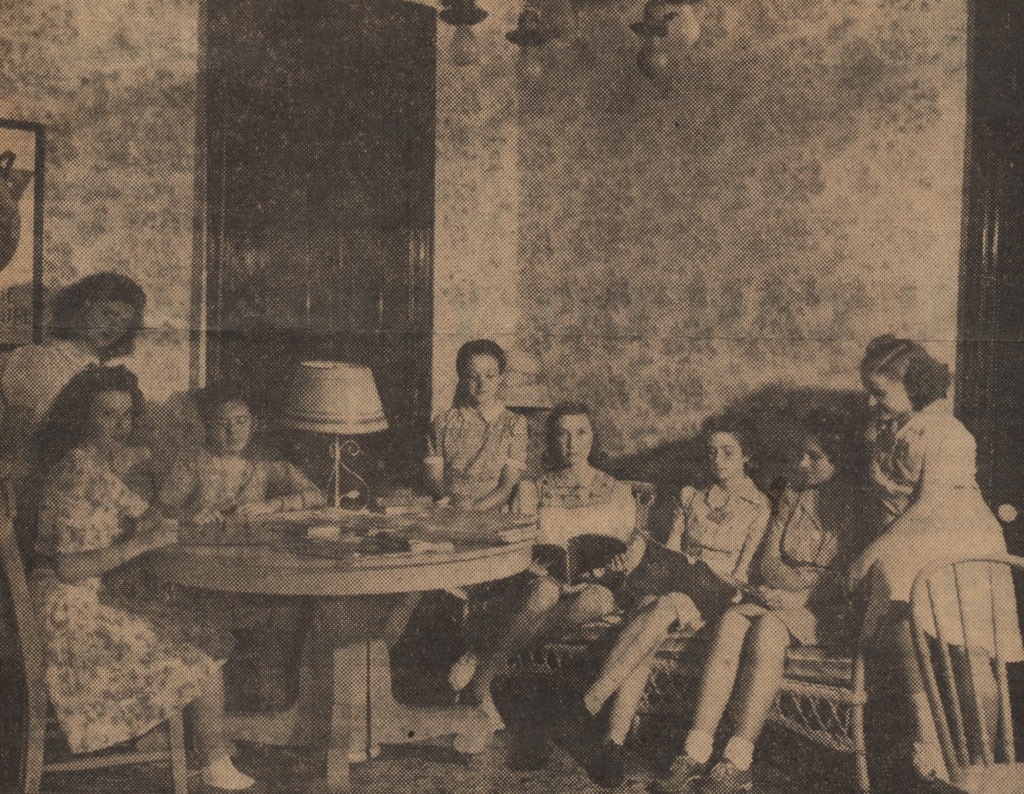
By the mid-1950s, it had long been evident that the Pekin Y needed a new and larger facility. The YWCA then acquired the property at 315 Buena Vista Ave. and moved one block east to a lot behind their former 310 S. Fourth St. building, which has since been demolished. The house at 315 Buena Vista, formerly the home of Erven G. Abel (1918-2010) and his family, was torn down in 1958 and the present facility – which included a swimming pool — was built in its place. Notably, the Y’s next-door neighbor to the south is the mid-19th century historic Gaither-Dirksen Home, home of U.S. Senator Everett M. Dirksen and his wife Louella, and before that the residence of Mary E. Gaither who played a chief role in the plans to build the 1902 Pekin Carnegie Library. Since the construction of the 315 Buena Vista facility, the YWCA’s building has undergone two large expansions, with the second one being completed in 2001. Their swimming pool has also been refurbished.
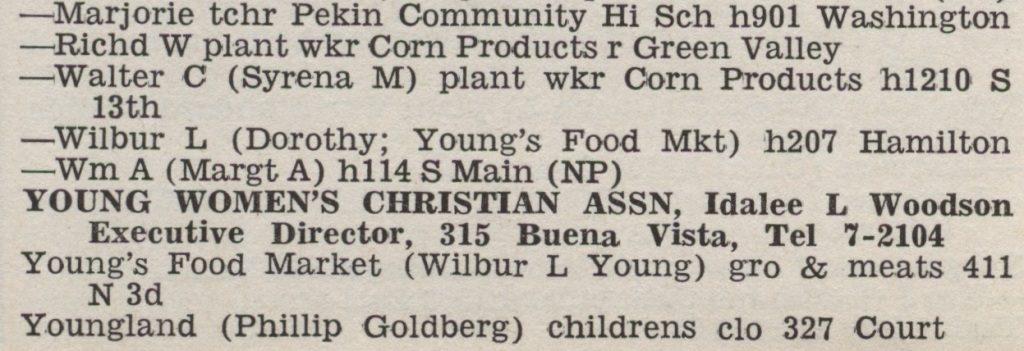
Besides giving program and office space for the Pekin YWCA and its own activities, the facility at 315 Buena Vista continues to provide space for other community groups, with rooms and its pool available for rental. That is only fitting, because the Pekin YWCA building is in fact Pekin’s civic center. The Pekin Y became the city’s civic center in the 1980s, at a time when the association was facing numerous financial challenges, with a decline in donations, a leaky roof, a boiler in need of repair, and a payroll that couldn’t be met.
The Pekin YWCA then worked with the city to obtain a grant from the Department of Commerce and Community affairs. That provided enough money to repair the structure and even build a daycare addition. As part of the arrangement, title to the building and to a large portion of the Y’s land is held by the City of Pekin, which legally designated the YWCA as the official civic center of Pekin. That is why Tazewell County records list the official owner of the 315 Buena Vista property as “Pekin Civic Center Authority c/o YWCA.” Eventually full title will revert to the YWCA.
